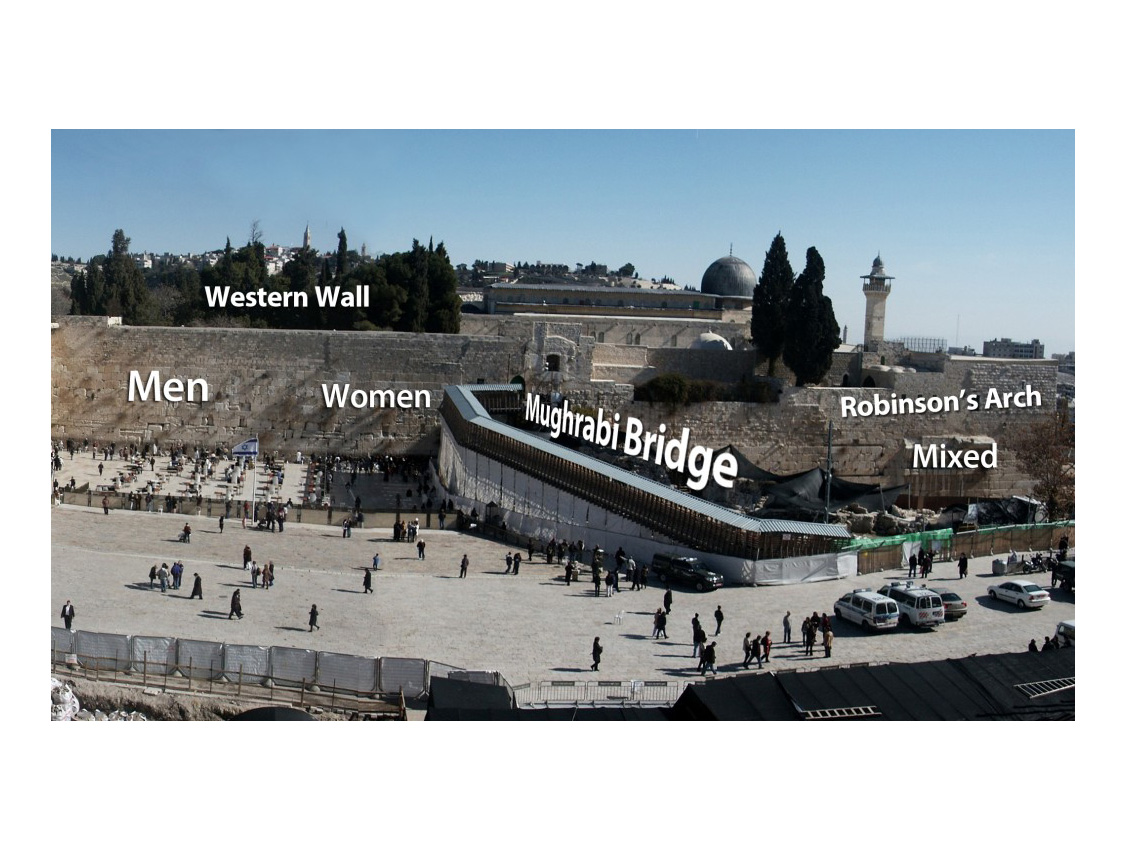“fetish” ('fediSH/) noun - “an inanimate object worshiped for its supposed magical powers or because it is considered to be inhabited by a spirit.”
Has the Western Wall (Hebrew: Ha-Kotel) in Jerusalem become a fetish? I wonder...
I remember well my first encounter with the Kotel. It was 1969, just two years after the reunification of Jerusalem, and the sense of relief and pride among many Jews at having reclaimed this important piece of Jewish history was still palpable. I was not unmindful of the fact that my own great-grandfather moved to Palestine (circa 1915) in order to live out his final years in the promised Land and be buried on the Mount of Olives facing the Old City. It is more than likely that he never was granted access to the Kotel, that site he deemed holy. That space, that wall (the remnant of the outer retaining wall of the platform upon which the Temple once stood) had been the locus of longing and desire for Jews for two millennia and was thus deemed sacred.
Returning to Jerusalem for a year of college in 1973 and, again, in 1979 for my first year of rabbinical studies, I had numerous occasions to visit the Wall. Whenever I stepped into that plaza and faced those massive stones, I was swept up in something difficult to define. But I must admit that I never found it an especially prayerful place. I recoiled from the mechitza, the physical barrier that forced men and women to pray separately; I bristled at the Orthodox hegemony over the site that precluded non-Orthodox expressions of prayer and dictated the forms of expression deemed appropriate and permissible. In short, I acknowledged the historic hold the Wall has held on the Jewish people even as I, personally, rejected it as a “holy” site.
Now comes the decision, touted as historic, that will allow some form of government-authorized and supported egalitarian prayer at the Wall. The New York Times (1-31-16) reported: “The government decision is meant to give visitors and worshipers a third option — an easily accessible and visible space south of the men and women’s sections, in the area known as Robinson’s Arch, dedicated to pluralistic, egalitarian prayer. It will be governed by a committee chaired by the head of the Jewish Agency, a quasi-governmental organization that works with the Jewish diaspora, and including representatives from the Reform and Conservative movements, the Jewish Federations of North America, the Israeli government and Women of the Wall.”
The Jerusalem Post (2-8-16) reports: “The plan adopted by the cabinet will see the current prayer platform for non-Orthodox prayers at the Robinson Arch area at the southern end of the Western Wall formally designated as a prayer space for non-Orthodox worship. At the same time, the main Western Wall plaza as it is known today, [and which sits to the left of the bridge leading up onto the Temple Mount], will be formally designated as a place for Orthodox worship.”
[If you wish to see where this egalitarian section will be located, click here.]
The Reform and Conservative movements are hailing this as a tremendous step forward in the fight for recognition and the creation of meaningful religious pluralism in the State of Israel. While I am supportive of that struggle, I find it ironic in the extreme that this decision is being hailed as a victory for liberal expressions of Judaism, especially Reform Judaism.
Why, exactly, is the Western Wall cherished by Orthodox Jews? Because it is the remnant of the Temple where, Orthodox Judaism still professes, God was most effectively encountered and propitiated through the practice of animal and grain sacrifices until its destruction by the Romans in 70 CE. Orthodox prayers still call for the restoration of the Temple and the reintroduction of sacrifices as a prelude to the coming of the mashiach, the messiah. Ultra-Orthodox fanatics have, in recent decades, plotted and attempted to destroy the Mosque of Omar and the Al-Aqsa mosque, which sit atop the Temple mount, as a prelude to the building of the Third Temple.
From its inception, Reform Judaism rejected the call for another Temple and the resumption of sacrifice as a means of drawing close to God. Reform Judaism consciously embraced the word “temple” and attached it to the names of its synagogues, symbolizing the notion that we have no need of that ancient temple, in Jerusalem, to engage in proper and efficacious worship. It is in this context that I see the “fetishization” of the Western Wall by non-Orthodox Jews. (Orthodoxy made a fetish of it long ago.)
I respect the deep attachments that many Jews, across the denominational spectrum, have toward the Wall but I do not share them. We would all be better served, I feel, by the commitment of the Israeli government to the full support of non-Orthodox Judaism throughout the State of Israel and not in this one, emotionally-charged, piece of real estate.
Reb Elias



